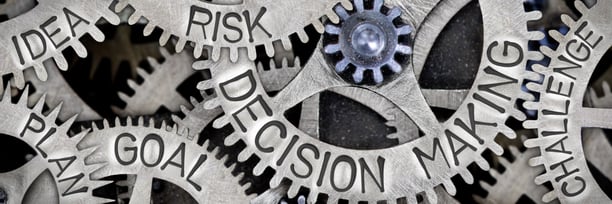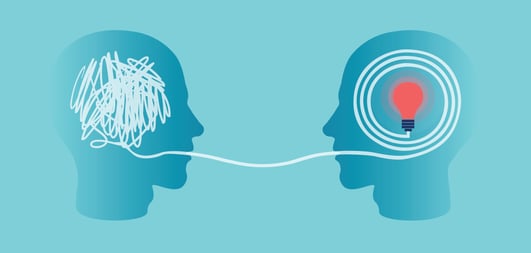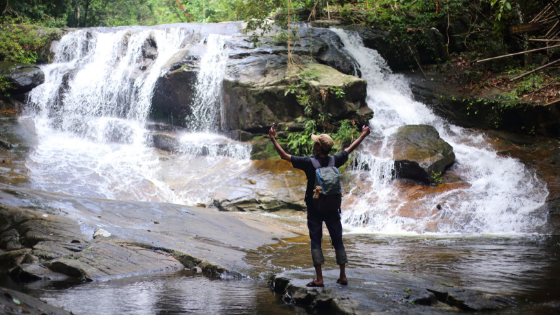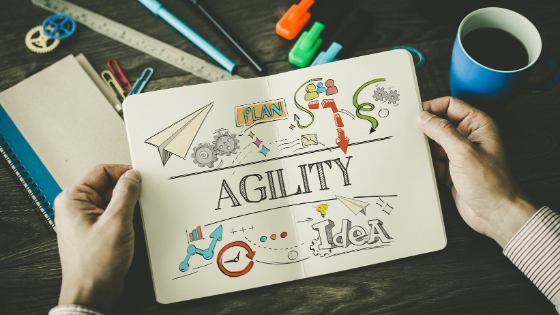We all love to be in the flow state. You know, when you are trying to accomplish something - whether it’s housework or work work or a hobby or writing or whatever – and you are so in the groove that the work seems almost effortless. Tasks that may have seemed formidable at one time suddenly become manageable. You no longer look for interruptions to rescue you from the drudgery – instead, you avoid interruptions like the plague. The flow state can even seem magical and make you feel almost superhuman. But, despite all this, it can be so elusive. Why is this? What is the science behind the flow state? How can we get there more often? And how do we ensure that our work environment supports flow state?
Let me tackle these questions one by one.
What is so elusive about flow state?
There are many barriers to entering flow state, and in this world of instant access 24/7 and nonstop social and media offerings, there is so much to compete with our attention. In short, it is tough to tune out interruptions. In addition, we tend to overthink and overanalyze. We worry and get anxious. We aim for perfection rather than just beginning a task. And we lose the natural connection to our minds and our awareness.
However, the elusive nature of flow also serves a survival purpose. The majority of the time, we need our minds to be more cautious, less “free flow.” If we lived in a perpetual state of flow, we might not to be able to appropriately make decisions or monitor our behavior. We may not be able to handle complex functions or to tune into critical requests for our time and attention. Flow is best reserved for times when peak performance is required for one specific task at a time and when it is fully appropriate to tune out all other distractions.

To Flow or Not to Flow
What is the science behind flow state?
First, a non-scientific definition that I like from an online webinar I recently attended, paraphrased: Flow describes those moments of rapt attention and total absorption, an optimal state where we feel and perform our best. Action and awareness merge, time flies, and self vanishes. Creativity, productivity, and performance all go through the roof.
But what is going on inside our bodies and brains during flow? Simply put, the flow state results from a radical alteration in normal brain function. The slower and energy-expensive system of conscious processing for higher cognitive functions is swapped out for the far faster and more efficient processing of the subconscious system that is responsible for heightened attention and awareness. The technical term for this is transient hypofrontality. In short, any brain structure that would get in the way of rapid-fire decision-making, such as the prefrontal cortex which is responsible for self-monitoring, is literally deactivated. Goodbye inner critic, goodbye voices of doubt, goodbye perfectionistic tendencies. Hello liberation, creativity, and productive risk-taking – all essential elements for getting the job done.

Flow State: from Garbled to Genius
Researchers have also established a link between performance-enhancing neurochemicals in our brains (such as endorphins and serotonin) and the flow state. While research continues on this topic and further discoveries are sure to be made, anyone who has experienced flow can attest to its power and its “magic” – all of which has a strong scientific base.
How do we achieve flow state more often?
So if flow is such a powerful state to be in, how can we achieve it when it is called for? Stillness of our minds is the key to achieving flow. We must learn how to eliminate distractions, including social media, external noise, or visual clutter. Much of this comes down to a conscious decision to disengage from what’s going on out there (and let’s face it – does it really matter what so and so is wearing today, or which fashionable New York restaurant so and so dined in?), and to simply begin the task.
If you are having a hard time getting started, find a way to change your surroundings or your body and mental state. Get out in nature. Stretch. Drink some water. Put on some calming or invigorating music, whatever the task calls for. Put your phone out of reach. Then just start and see where your subconscious takes you. More often than not, you’ll find you have all the resources within you to complete the task at hand.
Achieving flow becomes more natural once you start filling your mind with what you love or with things that inspire you. You will find that your efforts become less of a challenge and more second nature. You will also gain confidence from your accumulated experiences in mastering tasks during flow state. So whatever it takes, find a way to become mindful, and to stay firmly rooted in the here and now. Flow is all about this task, this experience.
How can we ensure our work environment encourages flow state?
Getting into a state of flow at work can be difficult, whether it’s in a noisy office or a home office, or something in between. Distractions are a-plenty, no matter where we go. However, with some creativity and planning ahead, you can make any environment more conducive to flow. The key is to slow down the conscious processing of thoughts – to get out of your head, and out of your own way, so to speak. How can we do this? Here are just a few suggestions.
Make a deliberate change in your body posture or movement. If you are sitting, stand up and walk around the office. If you can, do some stretching (just be considerate of others in your office as you strike your best warrior pose). Consider closing your eyes for a minute and visualizing a peaceful or otherwise motivating scene. The point is to break the heavy focus and/or overthinking cycle, and to free your mind so it can go into auto-pilot.

Strike a Pose to Get into Flow at Work
Change your environment. If possible, take a walk outside, or at least around the building. Move to a different room, preferably one with natural light. Grab your laptop and head to a local café. Move to a small area of the house or office where distractions are less prevalent. It is ideal for all offices, even the more modern open offices, to provide quiet areas for focus. But if you do not have access to such an area, use your creativity to find that place of relative solitude.
Wear headphones. If noise is an issue, wear either noise-canceling headphones or regular headphones with music. I find that soft instrumental music (or silence) helps me focus when I need to write or otherwise engage the brain, while more upbeat music with lyrics helps keep me focused when I am working on a project that requires physical movement. Experiment with different types of music – or even silence – and find what works best for you. White noise machines are also an excellent resource – just make sure they don’t put you to sleep!
A few other tips – You can also set a timer to focus on your task for a certain amount of time, but if you have a fairly large task to bang out, I would suggest you try to stick with it for at least an hour before rewarding yourself with a break. Once the timer goes off, you may have a tough time getting back into flow state – though it does become easier with practice. And you’ll be amazed what you can crank out in one hour in the flow state. Also, do not hesitate to set your Instant Messaging status to “Do Not Disturb” or to let your coworkers know you are focused on a project and will be available at a certain time later in the day.
Go with the Flow
Perhaps the most basic but useful tip of all regarding the flow state is to just get started. Resist the urge to edit or perfect as you go. Just go. Begin the paper. Start organizing the closet. Draft the client e-mails. Sketch the design. There will be time for editing and tweaking later on, when your critical prefrontal cortex is engaged again and all too ready to offer its critiques. For now, go with the flow and see where it leads. I think you’ll be pleased with the results.
Author’s note – using the tips above, I wrote this blog in record time. The dog's lunch was late, but she seems okay.




.jpg)




.jpg)
.jpg)
-1.jpg)
.jpg)
.jpg)
.jpg)
.jpg)
.jpg)

